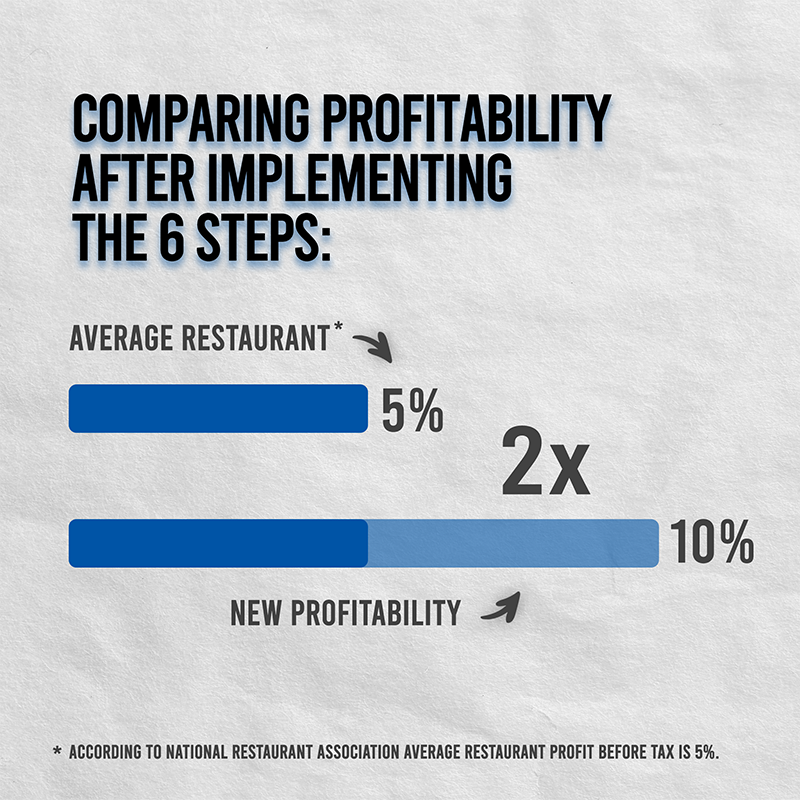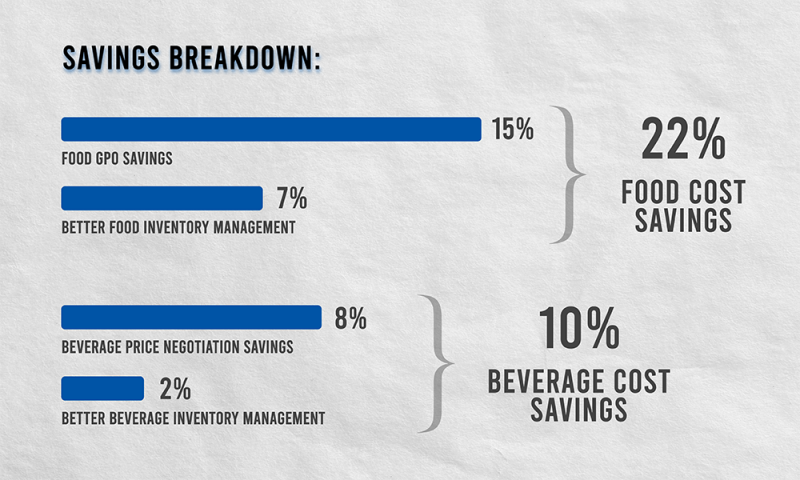In the world of hospitality, maintaining profitability is an ongoing challenge. As costs rise and customers demand more, inventory management to enhance profitability becomes a strategic imperative. With the average profitability of restaurants at five percent and bars hovering around 10-15 percent, there's substantial room for improvement.
Following these six proven steps can unlock significant savings.

Step 1: Conduct an initial financial assessment
If you don’t understand a problem thoroughly, you cannot solve it. Financial reporting enables us to see the picture in high definition. We can compare our cost performance with the industry and past performance benchmarks as well as “where we need to be."
“Where we need to be” is our theoretical cost, the product of the recipe cost and what was sold during the relevant period. Thus, when accounting does its job, we can see where the leakages in profitability are coming from. Focus on numbers and analyze your business carefully. As Abraham Lincoln once said, "If I had six hours to chop down a tree, I'd spend the first four sharpening the axe."
Step 2: Improve sourcing
The National Restaurant Association's survey of hospitality establishments reveals that Group Purchasing Organizations (GPOs) have generated cost savings of up to 15 percent across the industry. Tap into these underutilized savings vehicles.
For alcohol sourcing, understand your state liquor laws and optimize accordingly. Starting with the well drinks, negotiate with two to four manufacturers by discussing volume and spending. To maximize the buying power, optimize the menu by concentrating consumption on as few labels as possible without sacrificing revenue.
Step 3: Refine purchasing
Lee Iacocca once said, "Knowledge is the key to good purchasing. Understanding the total costs allows you to make informed decisions.” A purchaser must work closely with the ops team and accounting to understand the complete picture of how much inventory is on hand and how the company utilizes the products.
For volume discounts, the purchaser, accounting and ops team must work together to find sweet spots to aggregate the volume when it makes sense and order in bulk.
Step 4: Crafting a profit-centric menu and recipe portfolio

Companies should organize menus and recipes strategically to meet changing customer demand and protect profit margins.
Every alcohol item should have a valid business reason for existence. It is easy to lose track of hundreds of labels of wine or liquor.
Menu optimization minimizes waste and maximizes cash flow by cross-leveraging ingredients and scrutinizing byproducts and short-lived or slow-moving inventory.
Step 5: Strategically align teams
A study by Feedzai found that food waste accounts for 4-10 percent of restaurant purchases. Better inventory management could help cut this waste. Inventory management is the responsibility of all stakeholders.
A study by Toast found that aligning teams around shared goals increased productivity by 32 percent in restaurants. Chefs are responsible for deviation from theoretical cost. Purchasers are responsible for finding savings and ordering accordingly. Accounting measures and reports financial results accurately and timely. The front-of-house can use sales training and incentive programs to monetize slow-moving or otherwise expiring items.
Alignment works best when individuals are accountable. Accountability works both ways—reward employees who contribute to financial success.
Step 6: Bringing it all together—implement financial controls and systems
A restaurant or a bar is a complex manufacturing operation. With 78 percent reporting inconsistent recipes and portioning, standardized controls are essential.
In the last few years, we have seen a surge in operational systems such as Craftable, MarginEdge, Restaurant365 Inventory Module, MarketMan and Toast xtraCHEF, to name a few. Although each software has unique features, they all rely on accurate data inputs. Garbage in, garbage out.
The solution is implementing financial controls, hiring right and training staff. Then, systems can provide inventory oversight, tracking SKU fluctuations, unit-level visibility and reporting. Leanpath reported that restaurants that accurately track item-level costs reduce food waste by approximately 25 percent.
While our industry's passion is delivering great guest experiences, generating consistent profit enables us to succeed. By sharpening back-of-house management and implementing these fundamental operational best practices, bars and restaurants can reduce costs, minimize waste, enhance purchasing, increase inventory turns and ultimately optimize profitability.
Ufuk Soyturk is the founder and CEO of Accross Restaurant Consulting. Soyturk founded Accross because he believed that partnering with passionate and purpose-driven entrepreneurs and providing them with additional support, resources and tools would make a big impact in the hospitality industry.
This article originally ran on barandrestaurant.com.
